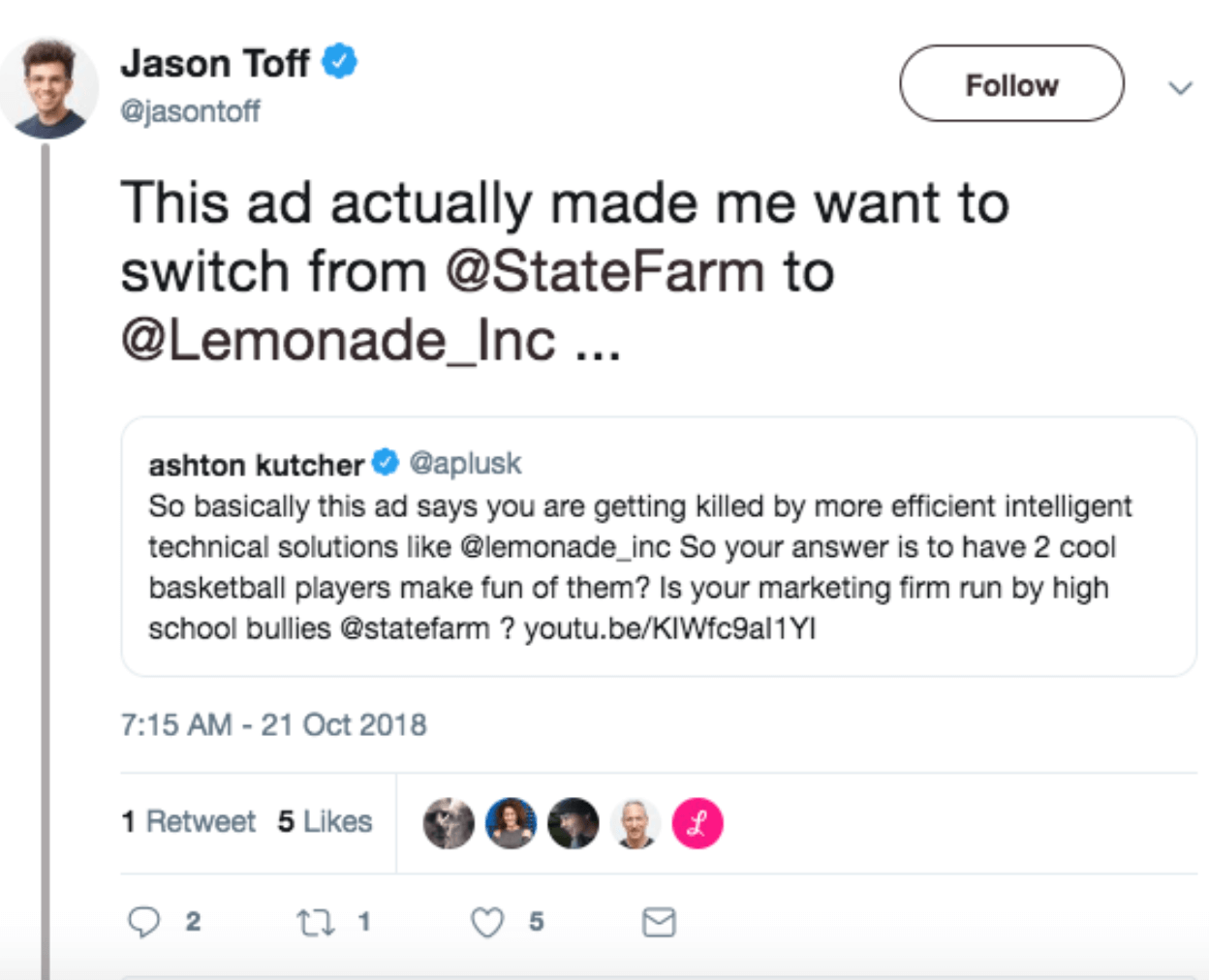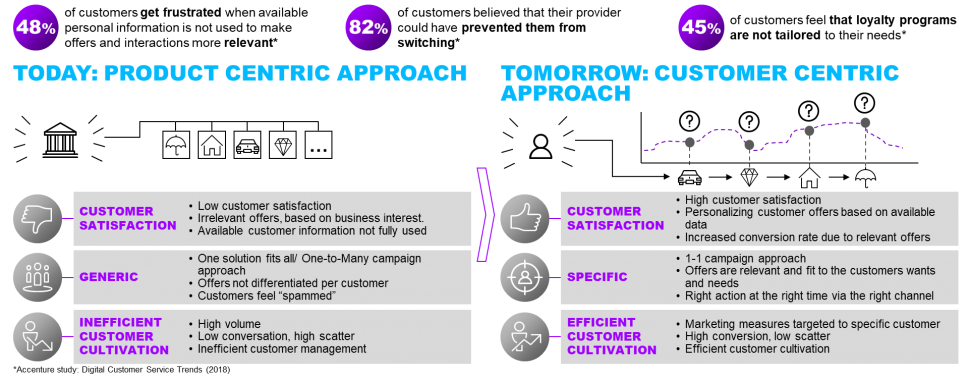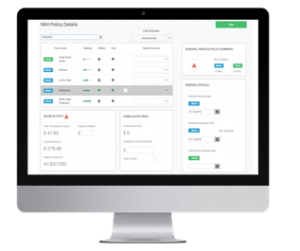How to Use AI in Commercial Lines
It can take a few years of steady improvements to truly redefine a company's cost structure, customer experience and position in the market.

It can take a few years of steady improvements to truly redefine a company's cost structure, customer experience and position in the market.

Get Involved
Our authors are what set Insurance Thought Leadership apart.
|
Partner with us
We’d love to talk to you about how we can improve your marketing ROI.
|
Cognitive computing improves customer self-service, call-center assistance, underwriting, claims management and regulatory compliance.

Get Involved
Our authors are what set Insurance Thought Leadership apart.
|
Partner with us
We’d love to talk to you about how we can improve your marketing ROI.
|

Mike de Waal is senior vice president of sales at Majesco.
Cyber criminals infiltrate corporate networks to leverage computers for cryptocurrency mining, often causing damage and creating liability.

Get Involved
Our authors are what set Insurance Thought Leadership apart.
|
Partner with us
We’d love to talk to you about how we can improve your marketing ROI.
|

John Farley is a vice president and cyber risk consulting practice leader for HUB International's risk services division. HUB International is a North American insurance brokerage that provides an array of property and casualty, life and health, employee benefits, reinsurance, investment and risk management products and services.
Given the dustup over the State Farm chatbot commercial taking a shot at Lemonade, Clearsurance looked at what customers are saying.

 To support its claim that Lemonade leverages technology to provide a customer experience superior to State Farm, Lemonade’s CEO Daniel Schreiber published, compared and contrasted its renters insurance customer rating and ranking to State Farm from Clearsurance's independent platform. You can see Clearsurance’s full renters insurance rankings here.
To support its claim that Lemonade leverages technology to provide a customer experience superior to State Farm, Lemonade’s CEO Daniel Schreiber published, compared and contrasted its renters insurance customer rating and ranking to State Farm from Clearsurance's independent platform. You can see Clearsurance’s full renters insurance rankings here.
 Full disclosure: Lemonade is an engaged subscriber and affiliate marketing partner of Clearsurance. State Farm is not currently a subscriber. Being a subscriber does not enable any company to manipulate their customer ratings, which derive 100% from customer feedback.
See also: New Entrants Flood Into Insurance
With that context, let’s see what renters insurance policyholders are saying about each company. Below is a table that includes renters insurance ratings of Lemonade and State Farm for six different categories. It’s important to note that, given that Lemonade was founded in 2015 and has a vastly smaller market share than State Farm, the startup insurer has far fewer renters insurance reviews (57) on Clearsurance than State Farm (1,349). Given that, the data should be taken with a grain of salt as Clearsurance user testing has revealed that the more reviews on a company, the more weight a consumer assigns to that company’s rating.
*Lemonade's claim service rating based on just nine reviews
Time will ultimately tell whether Lemonade can maintain these high customer ratings as it scales and receives more reviews from its policyholders. Still, we can at the very least get a sense for how consumers feel about Lemonade’s technology-based insurance. And the early returns portend a customer base that is highly satisfied with the experience.
Despite not having agents like State Farm, which has more than 18,000, Lemonade has a 4.75 customer service rating out of 5. The part of the story that’s harder to tell with the data is how consumers’ experience has been at the time of a claim.
Lemonade’s 4.33 claim service score is based on just nine reviews, which isn’t enough to draw any conclusions. By comparison, State Farm’s 4.26 claim service rating (based on 267 reviews that include a claim) and 4.41 customer service rating are both among the best for renters insurance companies.
The largest discrepancy between the two companies is price. Lemonade has received a 4.80 rating from consumers for price, while State Farm’s 4.21 price rating is its lowest of any of the six categories we collect ratings on.
Beyond just the ratings, though, consumer feedback within reviews has helped provide us with a look at what their policyholders value.
Lemonade’s policyholders frequently discuss the ease of working with the company, things like getting a quote, buying a policy and setting up the coverage. In fact. 53% of Lemonade reviews discuss ease of the user experience while just 15% of State Farm reviews do so.
The online services of Lemonade are also a main focus of reviews. More than a third of Lemonade reviews (35%) discuss the companies’ online and application-services while just 3% of State Farm reviews address the insurer’s online services. Instead, State Farm reviews are more apt to talk about agents (18%, compared with 0% for Lemonade, which has no agents).
All this isn’t to say consumers have indicated one method — agent or bot — is better than the other. Quite the contrary, in fact. The consumer ratings data shows that both methods are pleasing the companies’ respective policyholders.
State Farm and Lemonade appear to be geared toward different demographics and different service preferences. Some may prefer the personalized service an agent can provide. Others may prefer the ease and speed of a bot — like Lemonade’s Maya. That’s what this data indicates. And both companies appear to be enjoying success of their different business strategies.
Lemonade has raised $180 million in funding and just last week was one of the companies Forbes named in a list of the next billion-dollar startups. State Farm, meanwhile, holds the largest P&C market share in the U.S.
See also: Making Lemons From Lemonade
The misconception in all this — and why Lemonade may have taken offense to State Farm’s commercial — is that it insinuated agents are far superior to bots. The State Farm agent in the commercial says, “These bots don’t have the compassion of a real State Farm agent.”
While more State Farm reviews use words describing the helpfulness of the company (15% to 7% for Lemonade), the customer service ratings in the table above indicate that isn’t the only part that matters. In today’s technological age, customer service in the eyes of the consumer may not just be about being compassionate. It factors in things like ease and speed, too. We would submit that saving a customer time from having to think about insurance is an act of compassion.
What this means for Lemonade and State Farm in years to come remains to be seen. For now, a majority of the policyholders from these companies have indicated they’ve had a positive experience. If you’ve held a policy with Lemonade or State Farm, share your experience on Clearsurance to help better inform other insurance shoppers.
This article originally appeared on the Clearsurance blog.
Full disclosure: Lemonade is an engaged subscriber and affiliate marketing partner of Clearsurance. State Farm is not currently a subscriber. Being a subscriber does not enable any company to manipulate their customer ratings, which derive 100% from customer feedback.
See also: New Entrants Flood Into Insurance
With that context, let’s see what renters insurance policyholders are saying about each company. Below is a table that includes renters insurance ratings of Lemonade and State Farm for six different categories. It’s important to note that, given that Lemonade was founded in 2015 and has a vastly smaller market share than State Farm, the startup insurer has far fewer renters insurance reviews (57) on Clearsurance than State Farm (1,349). Given that, the data should be taken with a grain of salt as Clearsurance user testing has revealed that the more reviews on a company, the more weight a consumer assigns to that company’s rating.
*Lemonade's claim service rating based on just nine reviews
Time will ultimately tell whether Lemonade can maintain these high customer ratings as it scales and receives more reviews from its policyholders. Still, we can at the very least get a sense for how consumers feel about Lemonade’s technology-based insurance. And the early returns portend a customer base that is highly satisfied with the experience.
Despite not having agents like State Farm, which has more than 18,000, Lemonade has a 4.75 customer service rating out of 5. The part of the story that’s harder to tell with the data is how consumers’ experience has been at the time of a claim.
Lemonade’s 4.33 claim service score is based on just nine reviews, which isn’t enough to draw any conclusions. By comparison, State Farm’s 4.26 claim service rating (based on 267 reviews that include a claim) and 4.41 customer service rating are both among the best for renters insurance companies.
The largest discrepancy between the two companies is price. Lemonade has received a 4.80 rating from consumers for price, while State Farm’s 4.21 price rating is its lowest of any of the six categories we collect ratings on.
Beyond just the ratings, though, consumer feedback within reviews has helped provide us with a look at what their policyholders value.
Lemonade’s policyholders frequently discuss the ease of working with the company, things like getting a quote, buying a policy and setting up the coverage. In fact. 53% of Lemonade reviews discuss ease of the user experience while just 15% of State Farm reviews do so.
The online services of Lemonade are also a main focus of reviews. More than a third of Lemonade reviews (35%) discuss the companies’ online and application-services while just 3% of State Farm reviews address the insurer’s online services. Instead, State Farm reviews are more apt to talk about agents (18%, compared with 0% for Lemonade, which has no agents).
All this isn’t to say consumers have indicated one method — agent or bot — is better than the other. Quite the contrary, in fact. The consumer ratings data shows that both methods are pleasing the companies’ respective policyholders.
State Farm and Lemonade appear to be geared toward different demographics and different service preferences. Some may prefer the personalized service an agent can provide. Others may prefer the ease and speed of a bot — like Lemonade’s Maya. That’s what this data indicates. And both companies appear to be enjoying success of their different business strategies.
Lemonade has raised $180 million in funding and just last week was one of the companies Forbes named in a list of the next billion-dollar startups. State Farm, meanwhile, holds the largest P&C market share in the U.S.
See also: Making Lemons From Lemonade
The misconception in all this — and why Lemonade may have taken offense to State Farm’s commercial — is that it insinuated agents are far superior to bots. The State Farm agent in the commercial says, “These bots don’t have the compassion of a real State Farm agent.”
While more State Farm reviews use words describing the helpfulness of the company (15% to 7% for Lemonade), the customer service ratings in the table above indicate that isn’t the only part that matters. In today’s technological age, customer service in the eyes of the consumer may not just be about being compassionate. It factors in things like ease and speed, too. We would submit that saving a customer time from having to think about insurance is an act of compassion.
What this means for Lemonade and State Farm in years to come remains to be seen. For now, a majority of the policyholders from these companies have indicated they’ve had a positive experience. If you’ve held a policy with Lemonade or State Farm, share your experience on Clearsurance to help better inform other insurance shoppers.
This article originally appeared on the Clearsurance blog.
Get Involved
Our authors are what set Insurance Thought Leadership apart.
|
Partner with us
We’d love to talk to you about how we can improve your marketing ROI.
|

Ryan Baillargeon is the director of content for Clearsurance, the leading online publisher of insurance consumer data.

When IBM introduced its original PC in August 1981, threatening to wipe out the little companies that were already in the market, Steve Jobs had upstart Apple take out a full-page ad in the Wall Street Journal whose headline was: "Welcome, IBM. Seriously." The cheeky ad helped brand Apple, and we all know that the story had a happy ending for the company: Its market value now exceeds $1 trillion, while IBM, whose market cap amounted to three-quarters of the entire computer industry's in the early 1980s, now stands at less than an eighth of Apple's value.
A modern-day ad fight has now started in the insurtech world, as State Farm tweaked Lemonade, and Lemonade responded. State Farm has begun running TV ads that mock Lemonade (by implication, though not by name) and its use of chatbots to interact with customers. Here is the ad, suggesting that Lemonade's technology is no match for State Farm's 48,000 agents. Lemonade responded via a more modern medium (natch), tweeting: "Wait, @StateFarm , did you just fork out millions of your customers' premiums on an attack ad against @Lemonade_Inc and bots? As in, the country’s biggest insurance company is feeling the heat and getting A-listers to bash technology?" Lemonade has even paid to promote the video on YouTube and via other social channels, claiming the ad has backfired on State Farm.
We think the companies are on a crucial topic, so, rather than have them just retreat to their corners, a la Apple and IBM back in 1981, or simply amp up their ad budgets, we're inviting them to a public debate via webinar that we would moderate. We just reached out last night, so it may take a while to sort this out, but stay tuned for details. In the meantime, I'm going to start a discussion on the topic in the Inventing the Future of Risk and Insurance group that I moderate on our Innovator's Edge platform and that you can find here. (If you haven't already signed up for free access to IE, you can do so quickly here.) I'm going to invite to the discussion some heavy hitters among both incumbents and insurtechs.
I'm not so interested in who will win the marketing fight or whose business model is better—though the two companies could probably sell tickets to the fight, along with a lot of popcorn. I'm very intrigued by how quickly technology should be integrated into interactions with customers.
I've had a long-held bias against things like chatbots because I first had people singing the praises of natural language processing to me in the mid-1980s, when I started covering the technology world for the Wall Street Journal, and NLP was so very not ready for prime time. Even with all the improvements since then, chatbots still lack empathy -- they'll immediately tell you how to fill out the forms to collect on a life insurance policy but not really grasp how to deal with someone who has just had a family member die. Chatbots learn, but... a Microsoft bot set up on Twitter had to be quickly shut down because it learned racism and cussing, not exactly what Microsoft had hoped. The potential for abuse is such that California recently enacted a law requiring that chatbots identify themselves as AIs if used in selling or in politics.
Still, I much prefer dealing with companies via chat—no wait time, no getting passed around; I can keep doing whatever I'm doing on my computer and just interact as necessary. And the use of technologies such as chatbots fit the Clay Christensen model of disruption, which I think is mostly right. He says disruption happens when an innovator takes over a slice of the business that isn't very complicated and doesn't matter much to incumbents, then grabs another slice and another and.... In the case of chatbots, I think there are plenty of things that could be handled faster by technology and that the agents would be happy to hand off, such as questions about when a payment is due, whether it has been received and what the status of a claim is. Then the chatbots can grow from there. McKinsey has done lots of work showing that automation doesn't wipe out entire jobs; it automates pieces of jobs, in this case the more mundane aspects of agents' work and of call centers.
But State Farm and Lemonade could surely change my thinking. As I said, stay tuned.
Paul Carroll
Editor-in-Chief
Get Involved
Our authors are what set Insurance Thought Leadership apart.
|
Partner with us
We’d love to talk to you about how we can improve your marketing ROI.
|

Paul Carroll is the editor-in-chief of Insurance Thought Leadership.
He is also co-author of A Brief History of a Perfect Future: Inventing the Future We Can Proudly Leave Our Kids by 2050 and Billion Dollar Lessons: What You Can Learn From the Most Inexcusable Business Failures of the Last 25 Years and the author of a best-seller on IBM, published in 1993.
Carroll spent 17 years at the Wall Street Journal as an editor and reporter; he was nominated twice for the Pulitzer Prize. He later was a finalist for a National Magazine Award.
Insurers must not resist what trial lawyers will soon insist be the exclusive standard of safety, by way of multimillion-dollar settlements and verdicts.

Get Involved
Our authors are what set Insurance Thought Leadership apart.
|
Partner with us
We’d love to talk to you about how we can improve your marketing ROI.
|
Here is a fully automated underwriting process—solving major challenges in structuring, extracting and analyzing unstructured data.

How do you increase the efficiency of your underwriting processes? In this post, I will showcase a solution for a fully automated underwriting process consisting of roughly five steps—solving major challenges in structuring, extracting and analyzing unstructured data.
In this series on how to boost your AIQ, I’m exploring innovative ways to apply artificial intelligence to the insurance value chain. In my first post, I spoke about the artificial intelligence quotient (AIQ), which consists of these key ingredients: technology, data and people and the ability of an enterprise to invest significantly in their in-house AI capabilities and collaborate externally. To achieve success, insurers need to develop these capabilities: both in-house and collaboratively. In my second post, I explained how insurers should start with carving out a clear AI strategy to be able to understand which use cases can be most relevant and conducive to achieving their strategic goals, and focused on the application of AI-related technologies to boost sales and distribution. In this post, I’ll explore how insurers can leverage AI in underwriting and service management. How can insurers use AI in underwriting and service management? Sixty-eight percent of insurance employees expect intelligent technologies to create opportunities for their work, and 63% of insurance executives believe AI will transform the industry. In underwriting and service management, we see several relevant use cases for which insurers could leverage AI-related technologies: From this diagram, we can see that everything in the journey from data input to output can be automated using a selected set of AI-related technologies. This doesn’t mean that there’s no place for humans in this journey; the workforce will likely need to pivot to become trainers, explainers and sustainers (for more about these roles see our Future Workforce Survey for Insurance ). As AI pervades the insurance industry, "raising" and training intelligent machines to function efficiently and responsibly will become a critical role and a significant creator of jobs at different skill levels.
See also: Insurers: Start Boosting Your ‘AIQ’
“Next best action” guidance —how to leverage data insights for your clients’ needs
So you’ve structured your unstructured data, and you have more information about your customers’ needs. Many insurers fail to capitalize fully on their data – how can you use it optimally to deliver personalized products and services along the appropriate channels?
From this diagram, we can see that everything in the journey from data input to output can be automated using a selected set of AI-related technologies. This doesn’t mean that there’s no place for humans in this journey; the workforce will likely need to pivot to become trainers, explainers and sustainers (for more about these roles see our Future Workforce Survey for Insurance ). As AI pervades the insurance industry, "raising" and training intelligent machines to function efficiently and responsibly will become a critical role and a significant creator of jobs at different skill levels.
See also: Insurers: Start Boosting Your ‘AIQ’
“Next best action” guidance —how to leverage data insights for your clients’ needs
So you’ve structured your unstructured data, and you have more information about your customers’ needs. Many insurers fail to capitalize fully on their data – how can you use it optimally to deliver personalized products and services along the appropriate channels?
 We have developed a 360-degree customer view for insurers to offer the right product via the right channel through "next best action" recommendation engines.
The Accenture Next Best Action (NBA) app shows how insurers can deliver personalized offerings that cover the customer’s predicted growing insurance needs and wants. NBA empowers businesses with a real-time and customized decision-making service that provides relevant and timely offers to drive value. NBA is a data analytics-based marketing solution that provides inbound and outbound touch points with a customer recommendation engine to drive additional revenue.
We have developed a 360-degree customer view for insurers to offer the right product via the right channel through "next best action" recommendation engines.
The Accenture Next Best Action (NBA) app shows how insurers can deliver personalized offerings that cover the customer’s predicted growing insurance needs and wants. NBA empowers businesses with a real-time and customized decision-making service that provides relevant and timely offers to drive value. NBA is a data analytics-based marketing solution that provides inbound and outbound touch points with a customer recommendation engine to drive additional revenue.

 NBA has been shown to achieve a 30% to 45% increase in cross-sell and up-sell. How? The recommendation engine draws on available data to present insurers with a full overview of the best actions to be pursued, allowing them to respond to the needs of customers across a wide range of situations.
What is NBA?
NBA has been shown to achieve a 30% to 45% increase in cross-sell and up-sell. How? The recommendation engine draws on available data to present insurers with a full overview of the best actions to be pursued, allowing them to respond to the needs of customers across a wide range of situations.
What is NBA?
Get Involved
Our authors are what set Insurance Thought Leadership apart.
|
Partner with us
We’d love to talk to you about how we can improve your marketing ROI.
|
The “yeah buts” are waning across commercial lines as executives find emerging technologies that can improve business outcomes.

Get Involved
Our authors are what set Insurance Thought Leadership apart.
|
Partner with us
We’d love to talk to you about how we can improve your marketing ROI.
|

Karen Pauli is a former principal at SMA. She has comprehensive knowledge about how technology can drive improved results, innovation and transformation. She has worked with insurers and technology providers to reimagine processes and procedures to change business outcomes and support evolving business models.
P&C insurers have been slow to see how value-added services build loyalty, meaning many opportunities to capitalize on this strategy remain.

Get Involved
Our authors are what set Insurance Thought Leadership apart.
|
Partner with us
We’d love to talk to you about how we can improve your marketing ROI.
|

Tom Hammond is the chief strategy officer at Confie. He was previously the president of U.S. operations at Bolt Solutions.
A few recent examples illustrate the new interest in insurance from those both inside and outside of the insurance industry.

Get Involved
Our authors are what set Insurance Thought Leadership apart.
|
Partner with us
We’d love to talk to you about how we can improve your marketing ROI.
|

Mark Breading is a partner at Strategy Meets Action, a Resource Pro company that helps insurers develop and validate their IT strategies and plans, better understand how their investments measure up in today's highly competitive environment and gain clarity on solution options and vendor selection.